#Triton Market Research
Text
Aluminum Market: Products, Applications & Beyond
Aluminum is a versatile element with several beneficial properties, such as a high strength-to-weight ratio, corrosion resistance, recyclability, electrical & thermal conductivity, longer lifecycle, and non-toxic nature. As a result, it witnesses high demand from industries like automotive & transportation, electronics, building & construction, foil & packaging, and others. The high applicability of the metal is expected to drive the global aluminum market at a CAGR of 5.24% in the forecast period from 2023 to 2030.

Aluminum – Mining Into Key Products:
Triton Market Research’s report covers bauxite, alumina, primary aluminum, and other products as part of its segment analysis.
Bauxite is anticipated to grow with a CAGR of 5.67% in the product segment over the forecast years.
Bauxite is the primary ore of aluminum. It is a sedimentary rock composed of aluminum-bearing minerals, and is usually mined by surface mining techniques. It is found in several locations across the world, including India, Brazil, Australia, Russia, and China, among others. Australia is the world’s largest bauxite-producing nation, with a production value of over 100 million metric tons in 2022.
Moreover, leading market players Rio Tinto and Alcoa Corporation operate their bauxite mines in the country. These factors are expected to propel Australia’s growth in the Asia-Pacific aluminum market, with an anticipated CAGR of 4.38% over the projected period.
Alumina is expected to grow with a CAGR of 5.42% in the product segment during 2023-2030.
Alumina or aluminum oxide is obtained by chemically processing the bauxite ore using the Bayer process. It possesses excellent dielectric properties, high stiffness & strength, thermal conductivity, wear resistance, and other such favorable characteristics, making it a preferable material for a range of applications.
Hydrolysis of aluminum oxide results in the production of high-purity alumina, a uniform fine powder characterized by a minimum purity level of 99.99%. Its chemical stability, low-temperature sensitivity, and high electrical insulation make HPA an ideal choice for manufacturing LED lights and electric vehicles. The growth of these industries is expected to contribute to the progress of the global HPA market.
EVs Spike Sustainability Trend
As per the estimates from the International Energy Agency, nearly 2 million electric vehicles were sold globally in the first quarter of 2022, with a whopping 75% increase from the preceding year. Aluminum has emerged as the preferred choice for auto manufacturers in this new era of electromobility. Automotive & transportation leads the industry vertical segment in the studied market, garnering $40792.89 million in 2022.
In May 2021, RusAl collaborated with leading rolled aluminum products manufacturer Gränges AB to develop alloys for automotive applications. Automakers are increasingly substituting stainless steel with aluminum in their products owing to the latter’s low weight, higher impact absorption capacity, and better driving range.
Also, electric vehicles have a considerably lower carbon footprint compared to their traditional counterparts. With the growing need for lowering emissions and raising awareness of energy conservation, governments worldwide are encouraging the use of EVs, which is expected to propel the demand for aluminum over the forecast period.
The Netherlands is one of the leading countries in Europe in terms of EV adoption. The Dutch government has set an ambitious goal that only zero-emission passenger cars (such as battery-operated EVs, hydrogen FCEVs, and plug-in hybrid EVs) will be sold in the nation by 2030. Further, according to the Canadian government, the country’s aluminum producers have some of the lowest CO2 footprints in the world.
Alcoa Corporation and Rio Tinto partnered to form ELYSIS, headquartered in Montréal, Canada. In 2021, it successfully produced carbon-free aluminum at its Industrial Research and Development Center in Saguenay. The company is heralding the beginning of a new era for the global aluminum market with its ELYSIS™ technology, which eliminates all direct GHG emissions from the smelting process, and is the first technology ever to emit oxygen as a byproduct.
Wrapping Up
Aluminum is among the most widely used metals in the world today, and is anticipated to underpin the global transition to a low-carbon economy. Moreover, it is 100% recyclable and can retain its properties & quality post the recycling process.
Reprocessing the metal is a more energy-efficient option compared to extracting the element from an ore, causing less environmental damage. As a result, the demand for aluminum in the sustainable energy sector has thus increased. The efforts to combat climate change are thus expected to bolster the aluminum market’s growth over the forecast period.
#Aluminum Market#aluminum#chemicals and materials#specialty chemicals#market research#market research reports#triton market research
4 notes
·
View notes
Text
Targeting Pods Market: Components Redefine Military Operations

With military investments and modernization efforts soaring globally, the demand for advanced targeting pods has increased. As per Triton Market Research’s analysis, the global targeting pods market is projected to advance at a CAGR of 6.30% from 2023 to 2030. This growth is heavily prompted by the need for enhanced surveillance, intelligence gathering, and aircraft upgradation in military operations.
According to Stockholm International Peace Research Institute, in 2021, global military spending surged by 0.7%, reaching around $2113 billion. Among the nations, the US, India, China, Russia, and the UK were the largest spenders, collectively accounting for 62% of the total expenditure. This rise has paved the way for R&D to advance targeting pods by integrating cutting-edge components, including sensors, video datalinks, CCD cameras, etc.
Let’s look deeper into the role components play in widening market scope in the global business landscape:
Enhanced Sensor Technology:
FLIR sensors are among the key components gaining traction, owing to their ability to assist pilots in detecting targets in foggy climates using short-wave IR imaging. The technology also offers GUI control and battle damage assessment. Along with this, sensors mounted in forward-looking infrared cameras assist pilots in guiding their aircraft in the dark and fog via infrared radiation detection. This has predominantly expanded their integration for military operations.
For instance, in December 2022, Leonardo DRS obtained a contract (worth around $39.5 million) from the US Army to deploy FLIR sensors for high-value platforms across the army fleet.
Advanced Resolution with CCD Camera:
Charge Coupled Devices or CCD cameras have gained prominence in recent years to capture still and moving images, accurately capturing target location and movement. Since they provide enhanced picture quality and decreased noise, they are expected to witness substantial growth over the forecast period. In this regard, the LITENING Advanced Targeting (AT) , a precision targeting pod, includes a CCD-TV camera to gain target images in the electromagnetic spectrum’s visible section.
The growing deployment of unmanned vehicles has also accelerated the adoption of CCD cameras. For example, the Star SAFIRE 380-HDc by Teledyne FLIR features a high-definition CCD camera with a digital inertial measuring unit and GPS for target geo-location abilities.
Precision with Video Datalinks:
Video datalinks play a pivotal role in enhancing the functionality of targeting pods, offering reliable means to transmit real-time data from aircraft to ground stations. In this regard, Lockheed Martin’s two-way video data link for the Sniper Advanced Targeting Pod enables forward deploying forces to acquire the live footage of Sniper, enabling analysis of uplinked tactical video. The video data link is customizable due to the modular configuration of the pod.
Further, Northrop Grumman Corporation’s LITENING Advanced Targeting (AT) was selected to replace the legacy targeting pods in the US Navy’s fleet. In a press release, James Conroy, Northrop Grumman’s Vice President of navigation, targeting, and survivability, said, “The pod’s digital video, autonomous target tracking, and laser sensors will give Naval aviators an entirely new set of capabilities for operations over land and sea today, and the growth capabilities built into LITENING’s modular design ensure that the pod can evolve to meet changing requirements.” Such strategic steps and technological developments thus boost the North American targeting pods market, spearheaded by the US.
Laser-Infused Pods Grants Tactical Advantage
Laser and infrared are presently widely opted systems over radar as they are less readily detectable by enemies, enabling efficient target detection and attack. Among these, lasers are gaining significant focus for aerial weaponry due to their precise range data compared to other systems. In this scenario, every division of the US armed forces has created its niche for laser technologies, ranging from laser designators to laser spot trackers. The Lockheed Martin AN/AAS-38 Nite Hawk consists of a laser designator and tracker with laser-guided munitions.
Precision-guided ammunitions enable accuracy in striking targets as well as decrease casualties and weapons’ wastage. Hence, integrating laser technology to improve warfare techniques and enable precision strikes is probable to widen the global targeting pods market scope over the forecast period.
FAQs:
Q1) Which are the notable companies in the targeting pods market?
Thales Group, Lockheed Martin Corporation, Northrop Grumman, and FLIR Systems are some notable companies in the targeting pods market.
Q2) What factors drive the targeting pods market’s growth?
Factors such as growing demand for aircraft modernization, increasing government military expenditure, and border disputes drive the targeting pods market’s growth.
#Targeting Pods Market#Targeting Pods#Aerospace#Defense#triton market research#market research reports
0 notes
Text
2023-2030 Analysis: Data Center Distribution Transformer Market
Triton Market Research presents the Global Data Center Distribution Transformer Market report segmented by Phase Type (Single-Phase, Three-Phase), Insulation (Oil Immersed, Dry Type), Voltage Range (Below 650 kVA, 650-1250 kVA, 1250-2500 kVA, Above 2500), Distribution Channel (OEMs, Market Distributor, Online Retailer, Electrical Contractor), and Regional Outlook (Middle East and Africa, Europe, Asia-Pacific, North America, Latin America).

The report further includes the Market Summary, Industry Outlook, Key Insights, Porter’s Five Forces Analysis, Market Maturity Analysis, Industry Components, Regulatory Framework, Key Buying Impact Analysis, Key Market Strategies, Market Drivers, Challenges, Opportunities, Analyst Perspective, Competitive Landscape, Research Methodology & Scope, Global Market Size, Forecasts & Analysis (2023-2030).
According to Triton’s analysis, the revenue of the data center distribution transformer market is expected to show a growth trend at a CAGR of 6.16% during the forecast period 2023-2030.
A data center distribution transformer efficiently controls the flow of electricity between the power grid and the data center by lowering the high voltage to a level suitable for equipment operation. This process ensures both reliability and safety.
Due to energy-intensive data centers, there is an increasing need for energy-efficient transformers, which are key to voltage regulation. This increases the efficiency and safety of electrical systems and enables smooth power flow within circuits. Such transformers are critical in voltage regulation, improving electrical system efficiency and safety. Consequently, they support the balance of current flow, which is crucial for the smooth operation of electric circuits. The need for energy-efficient solutions that curb data center energy consumption is expected to drive the growth of the global data center distribution transformers market over the forecast period.
Challenges arise from harmonics within the power supply line, which can cause disruptions in power distribution systems. These impacts include compromised system efficiency, equipment overheating, shortened lifetimes, and potential power quality issues. Such harmonics can pose risks and affect the growth of the global data center distribution transformer market.
The global data center distribution transformer market is led by North America, which accounts for the highest revenue share. This dominance is expected to spread further, owing to the increasing use of renewable energy for power generation, rising internet data consumption, and proliferation of smart grid initiatives. As demand for seamless digital connectivity continues, data centers play a central role in data’s smooth transmission and storage. In addition, the region’s proactive approach to integrating renewable energy into its power infrastructure meets environmental sustainability goals and strengthens data center reliability in the face of power supply shifts.
The key companies thriving in the data center distribution transformer market include Siemens AG, Hitachi ABB Power Grids, Hammond Power Solutions Inc, Kirloskar Electric Company Limited, Wilson Power Solutions Ltd, General Electric Company, Legrand Data Center Solutions, Hyosung Heavy Industries, Schneider Electric SE, and Eaton Corporation Plc.
Competition in the data center distribution transformer market is intense, and companies are vying to outperform each other. This effort manifests in offering improved features at similar prices or comparable features at lower costs. In addition, established companies such as Siemens AG, General Electric Company, Schneider Electric SE, and Hyosung Heavy Industries compete based on various factors such as product quality, reliability, efficiency, and innovation.
#Data Centers#Distribution Transformer Market#ICT#IT Hardware#Triton Market Research#Market Research Report
1 note
·
View note
Text
Data Center Distribution Transformer Market by Three Phase: Details Inside
According to the United States International Trade Commission, the global count of physical data centers reached approximately 8,000 by 2021. This growth aligns with the continuous technological strides and expansion of services within data centers. The surge in IT investments reflects the drive to streamline operations and bolster data storage capabilities. Concurrently, the escalating demand for electricity, coupled with strategically supportive policies aimed at fortifying existing grid infrastructures, has contributed to the sustained expansion of the data center distribution transformer market.

Based on the global scenario, the market for data center distribution transformer was valued at $6766.22 million in 2022 and is expected to reach $10797.49 million by 2030, progressing at a CAGR of 6.16% during the forecast period 2023-2030.
Insights into the latest Phase Type Technologies
Single-phase:
Using single-phase distribution transformers for data centers is a strategic move that meets the evolving needs of modern data centers. These transformers are central to data center power distribution because they efficiently convert and distribute electrical power.
Manufacturers specializing in single-phase transformers have responded to the needs of the data center by developing innovative solutions. Companies such as Schneider Electric SE, Eaton Corporation Plc, Hitachi ABB Power Grids, and Siemens AG are known for their expertise in manufacturing high-quality single-phase transformers for data centers. By integrating these transformers, data centers can optimize their power systems, improve energy efficiency, and ensure a reliable power supply for critical IT equipment.
Three-phase:
With rising energy demands and swift tech progress, ultra-large-capacity three-phase transformers are now pivotal, reshaping power distribution. Established leaders such as Siemens AG, ABB Ltd, etc., recognized the need for high-voltage, high-power transformers to expand power transmission grids. Data center distribution transformer manufacturers have made significant strides in innovating materials, design, and digital control systems to meet demand. ABB has implemented advanced cooling techniques using innovative materials such as liquid silicone rubber (LSR) insulation. These advances have improved transformers’ efficiency, reliability, and performance in modern power systems.
As Triton’s analysis indicates, the data center distribution transformer market by three-phase is expected to advance at the fastest CAGR of 6.22% over the projected years 2023-2030.
Impact of Sustainability Trend on Phase Change Solutions
1. Integration of Renewable Energy Sources:
One of the key trends revolutionizing data center power distribution is the integration of renewable energy sources. Solar, wind, and hydropower offer important solutions to environmental problems associated with fossil fuels.
Data centers consume a lot of energy and contribute significantly to global electricity consumption. Recent statistics underscore the rapid adoption of renewable energy in data centers. According to a report from the Solar Energy Industries Association (SEIA), the installation of solar panels on data center rooftops has increased by 10% in the past year alone. Tech giants like Google and Microsoft have committed to powering their data centers with 100% renewable energy, highlighting the sector’s push toward sustainability.
2. Impact on Transformer Phase Type:
Integrating renewable energy sources has profound implications for various aspects of data center design and requires reevaluating transformer phase configurations. Because renewable energy sources bring irregular power generation, transformer phase configurations must be carefully considered. This is critical for a seamless and reliable power supply that harmonizes with the variable output of renewable energy sources.
Companies that power their data centers with renewable energy have been able to reduce their operating costs by about 40%, according to a report by Forbes. This burgeoning trend is not just changing business management but also shaping the landscape of renewable energy Power Purchase Agreements (PPA), in which the data center sector is actively involved. Notable examples include Amazon and Microsoft, which signed renewable power contracts in 2021 PPA.
The rise of renewable energy is reshaping the distribution transformer market dynamics in the North American region. The regional market claims a dominant share of over 40% due to increased reliance on renewables in power generation. Demand for energy-efficient infrastructure drives the North America data center distribution transformer market and is projected to evolve with a CAGR of 35.25% in the studied years.
Conclusion
In the ever-evolving data center landscape, the expansion of distribution transformers stands out prominently. The rapid global spread of data centers, surging power requisites, and calculated incorporation of renewable energy have collectively revolutionized the global data center distribution transformer market. Single-phase transformers optimize rural distribution efficiency, while their three-phase counterparts spearhead cutting-edge power infrastructure, shaping an efficient and sustainable energy paradigm for the future.
FAQs:
Q1) Which segments are studied in the market?
The segments reviewed in the market include by Phase type (single-phase and three-phase), insulation (oil immersed and dry type), voltage range (below 650 kVA, 650-1250 kVA, 1250-2500 kVA, and above 2500 kVA), and distribution channel (OEMs, market distributors, online retailers, and electrical contractor).
Q2): What geographies are studied in the data center distribution transformer market?
Latin America, Europe, North America, Asia-Pacific, Middle East & Africa.
#data center distribution transformer market#data center distribution transformer#ict#triton market research#market research reports
0 notes
Text
Cellulite Treatment Market: Advanced Procedures Supplement Growth
In recent years, the demand for cellulite treatments has skyrocketed, and one of the key driving factors is the alarming rise in obesity rates globally. According to WHO, obesity has nearly tripled since 1975, with over 650 million adults classified as obese. As obesity rates continue to climb, individuals are seeking effective solutions to tackle the unwanted dimples and uneven skin texture caused by cellulite. This further widens the scope of the global cellulite treatment market, which as per Triton’s estimates, is set to grow at a CAGR of 9.48% during the forecast period 2023-2030.

Another notable trend is the rise in medical tourism, which has influenced the demand for affordable and advanced cellulite reduction procedures across various destinations. By leveraging medical tourism, players are able to tap into distinct clientele by offering competitive costs, advanced therapies, and skilled professionals.
In this blog, we explore the widely preferred cellulite treatments, along with the initiatives by market contenders.
Combating Cellulite: Revolutionary Treatments Facilitate Reduction
Cellulite is caused by various issues, including hormones, lymphatic drainage, medical conditions, pregnancy, and aging. Although completely removing cellulite might not be possible, several targeted methods and lifestyle changes may help reduce its appearance. Some of the key procedure types include:
Non-invasive procedure type captures the highest share of the cellulite treatment market. Factors like a short hospital stay, quick recovery time, painless procedure, and lower cost significantly elevate the preference for non-invasive therapies. Some widely opted non-invasive methods include radiofrequency, suction massage, cryolipolysis, and high-frequency focused ultrasound. For instance, cryolipolysis freezes and eliminates fat cells, which the body later removes naturally. Whereas treatments like radiofrequency and ultrasound heat skin and stimulate collagen production, which reduces cellulite.
Our analysis shows North America dominated the market with revenue worth $811.68 million in 2022. The rising demand for advanced procedures, disposable income, and technological innovation primarily drives the treatment scope in North America. As per industry sources, in 2020, about 357,938 non-invasive procedures were performed in the US. This further led to various initiatives by key players. For instance, in 2021, Soliton launched RESONIC, a rapid acoustic pulse device, to non-invasively improve cellulite appearance. These factors thus boost the North America cellulite treatment market, directed by the US.
Minimally invasive procedures are gaining immense traction, expected to witness the fastest growth at a CAGR of 9.56% during the forecast period 2023-2030. As the name suggests, this treatment option limits the size of incisions, significantly reducing wound healing time and associated pain. In this regard, subcision is a minimally invasive remedy using a tiny blade to cut the connective tissue holding fat. Further, laser therapy includes inserting tiny laser fibers beneath the skin.
The growing focus on streamlined, cost-effective procedures has supplemented the category’s growth, prompting various strategic launches in recent years. Key examples include:
In May 2022, Revelle Aesthetics unveiled Aveli, a minimally invasive device to temporarily reduce cellulite appearance on the buttocks and thigh in a single session.
AirSulpt Technologies Inc, in August 2022, introduced AirSculpt Smooth, which facilitates the complete removal of stubborn cellulite dimples.
Topical procedures such as vacuum suction have gained significant prominence, mainly to increase blood flow and lower fat buildup. This treatment method includes using various creams containing ingredients such as caffeine, theophylline, and others. Besides this, some creams include minerals and vitamins to treat soft cellulite type. Presently, soft cellulite captures the majority share in the cellulite type segment. The growing demand for topical therapies due to ease of application and availability of a range of products drives the category’s growth.
Cosmetic Appearance: An Expanding Facet
While medical tourism and obesity are key driving aspects, beauty consciousness also widens the scope of the cellulite treatment market. With the rise of social media, consumer focus on their appearance has soared over the past decade. This has soared the number of cosmetic procedures, including cellulite reduction treatments. For instance, in Japan, approximately 174,5621 cosmetic therapies were performed in 2021. The rising medical tourism for aesthetic treatments across India, China, Japan, and South Korea, contributes heavily to the studied market’s expansion.
Additionally, given the rise in beauty consciousness, several beauty clinics are capitalizing on innovative solutions to boost client satisfaction and revenue. For example, Cynosure Inc’s TempSure RF platform delivers monopolar radiofrequency energy via unique massage heads to reduce cellulite appearance. Hence, focus on aesthetic appearance and technological advancements creates novel opportunities for the cellulite treatment market.
#cellulite treatment market#cellulite treatment#consumer goods and services#personal care products#market research reports#market research#triton market research
0 notes
Text
Synthetic Diamonds Market: Global Prospects & Challenges
The staggering ramifications of the COVID-19 pandemic affected the global distribution system of major countries producing synthetic diamonds. However, post-pandemic, the diamond industry was stimulated through digital platforms. With reduced operations, companies relied heavily on digital activities while focusing on their B2C online business. Sale of synthetic diamonds was expected to increase as manufacturers gave more importance to environment friendliness and sustainability in the production of lab-grown diamonds. Thus, due to the rising branding and marketing, along with increasing industrial uses, the global synthetic diamonds market is anticipated to advance with a CAGR of 8.26% during the forecasting period 2022-2028.
Additionally, major countries such as India and China have become a hub for the production and processing of lab-grown diamonds as a result of technological breakthroughs, cost-efficient production of gem-quality stones and growing consumer awareness. The rising production is because synthetic diamonds make an ideal window material for many industrial, R&D, defense and laser applications.
Rising Industrial Demand - Key Driver
Modern technology resembles the conditions under which diamonds naturally develop by using either of the two manufacturing methods high pressure-high temperature (HPHT) or chemical vapor deposition (CVD). Our study estimates that the high pressure-high temperature will dominate the manufacturing method segment, capturing a share of 59.59% during the forecast period 2022-2028. These processes produce synthetic diamonds with the same chemical properties as earth-mined diamonds, allowing them to be used in a variety of industry applications:
Construction
Mining
Healthcare
Defense
Future Prospects
Even though lab-grown diamonds are an inexpensive alternative to earth-mined ones, the high cost of production can result in a setback for the synthetic diamonds market. For instance, a perfect CVD diamond can take 400 hours of hatching time and specialized reactors to culture the diamonds. These reactors consume approximately 10000 units of power monthly, thereby increasing operational costs. However, the ongoing research around quantum computing, simulation, communication and sensing, with potential impacts in healthcare and the automotive industry, is expected to increase synthetic diamonds’ applications and reduce the overall production cost.
For instance, in 2021, a German-Australian start-up Quantum Brilliance announced the installation of a diamond-based quantum accelerator leveraging synthetic diamond technology. The start-up stated promising applications, leading to major benefits for drug design, chemical synthesis, energy storage and nanotechnology.
#synthetic diamonds market#synthetic diamonds#cvd diamonds market#specialty chemicals#chemicals and materials#market research reports#triton market research
0 notes
Text

New SpaceTime out Wednesday....
SpaceTime 20231004 Series 26 Episode 119
Carbon discovered on Europa
Astronomers have discovered carbon dioxide – one of the ingredients essential for life as we know it on the surface of the Jovian ice moon Europa.



NASA’s Independent Review board report on the Mars Sample Return mission
The space agency established the Board in May to evaluate the technical, cost, and schedule plans of the mission prior to any final design.
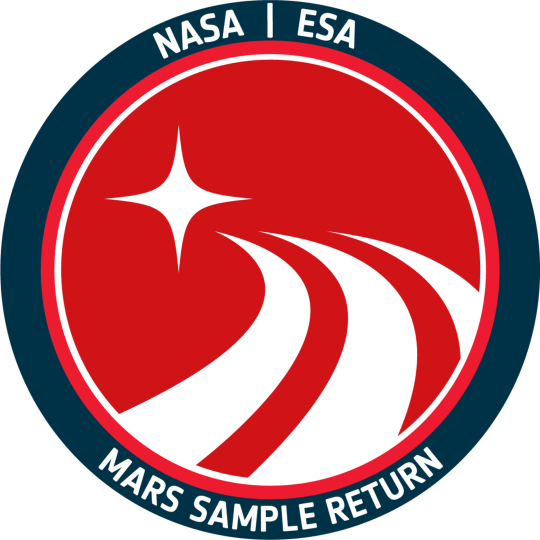
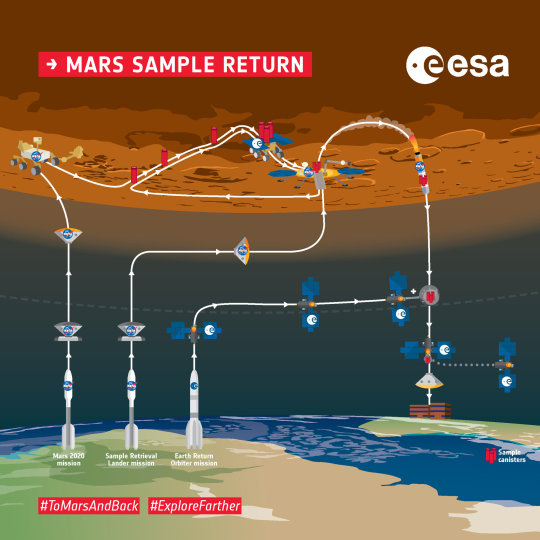
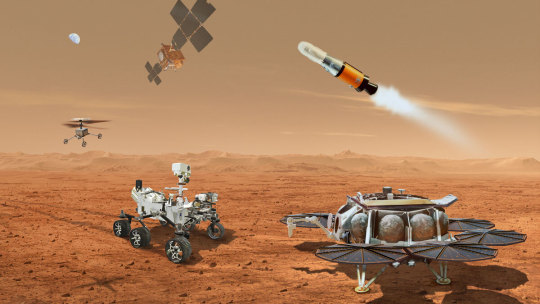


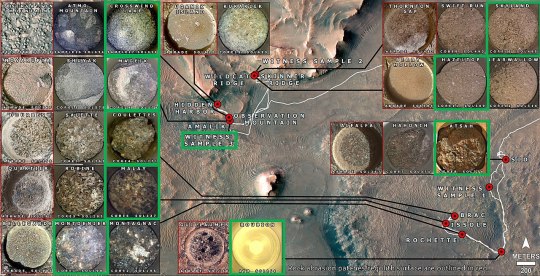


A new twist to the Story of Great Eruption of Eta Carinae
Astronomers have combined 20 years worth of data on one of the brightest binary star systems in the sky – Eta Carinae -- to uncover important new details about a massive eruption which was witnessed on Earth in the mid-19th century.



The Science Report
2023 was Earth’s hottest summer since global records began.
Jellyfish can be trained to spot and dodge obstacles despite their lack of a central brain.
Australia to purchase a fourth MQ-4C Triton high altitude surveillance drone
Alex on Tech:
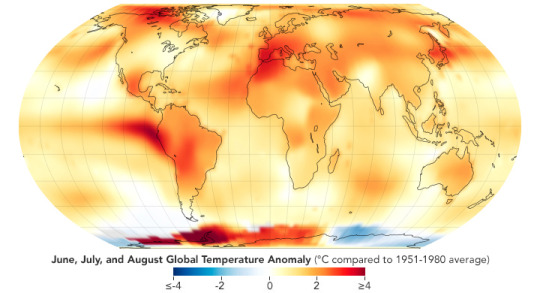
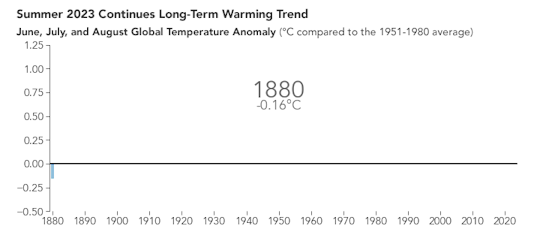

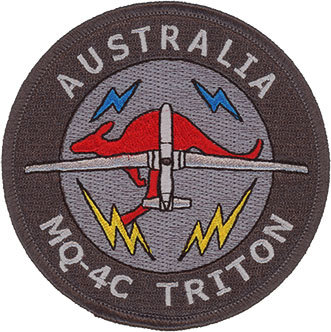




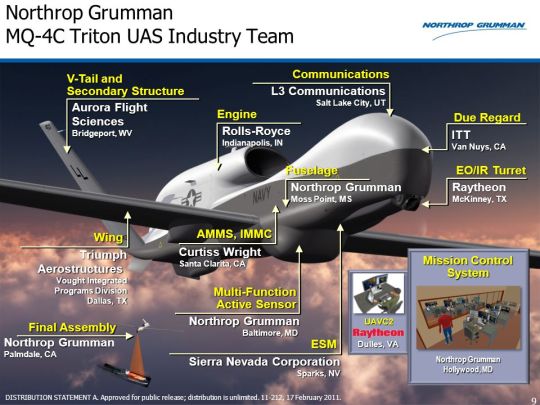




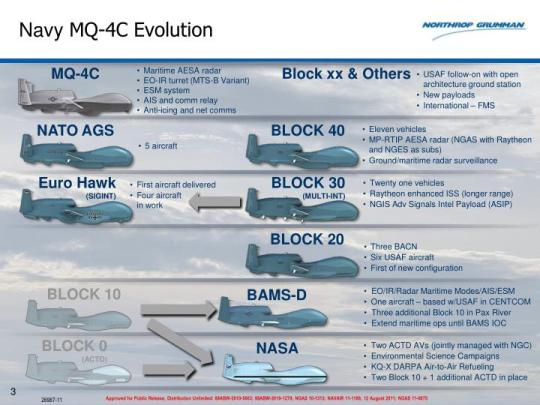
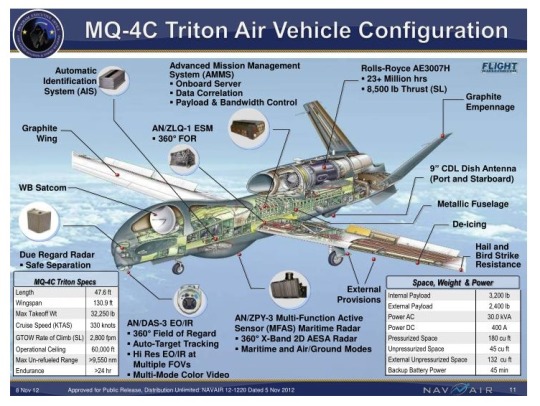
SpaceTime covers the latest news in astronomy & space sciences.
The show is available every Monday, Wednesday and Friday through Apple Podcasts (itunes), Stitcher, Google Podcast, Pocketcasts, SoundCloud, Bitez.com, YouTube, your favourite podcast download provider, and from www.spacetimewithstuartgary.com
SpaceTime is also broadcast through the National Science Foundation on Science Zone Radio and on both i-heart Radio and Tune-In Radio.
SpaceTime daily news blog: http://spacetimewithstuartgary.tumblr.com/
SpaceTime facebook: www.facebook.com/spacetimewithstuartgary
SpaceTime Instagram @spacetimewithstuartgary
SpaceTime twitter feed @stuartgary
SpaceTime YouTube: @SpaceTimewithStuartGary
SpaceTime -- A brief history
SpaceTime is Australia’s most popular and respected astronomy and space science news program – averaging over two million downloads every year. We’re also number five in the United States. The show reports on the latest stories and discoveries making news in astronomy, space flight, and science. SpaceTime features weekly interviews with leading Australian scientists about their research. The show began life in 1995 as ‘StarStuff’ on the Australian Broadcasting Corporation’s (ABC) NewsRadio network. Award winning investigative reporter Stuart Gary created the program during more than fifteen years as NewsRadio’s evening anchor and Science Editor. Gary’s always loved science. He studied astronomy at university and was invited to undertake a PHD in astrophysics, but instead focused on his career in journalism and radio broadcasting. He worked as an announcer and music DJ in commercial radio, before becoming a journalist and eventually joining ABC News and Current Affairs. Later, Gary became part of the team that set up ABC NewsRadio and was one of its first presenters. When asked to put his science background to use, Gary developed StarStuff which he wrote, produced and hosted, consistently achieving 9 per cent of the national Australian radio audience based on the ABC’s Nielsen ratings survey figures for the five major Australian metro markets: Sydney, Melbourne, Brisbane, Adelaide, and Perth. The StarStuff podcast was published on line by ABC Science -- achieving over 1.3 million downloads annually. However, after some 20 years, the show finally wrapped up in December 2015 following ABC funding cuts, and a redirection of available finances to increase sports and horse racing coverage. Rather than continue with the ABC, Gary resigned so that he could keep the show going independently. StarStuff was rebranded as “SpaceTime”, with the first episode being broadcast in February 2016. Over the years, SpaceTime has grown, more than doubling its former ABC audience numbers and expanding to include new segments such as the Science Report -- which provides a wrap of general science news, weekly skeptical science features, special reports looking at the latest computer and technology news, and Skywatch – which provides a monthly guide to the night skies. The show is published three times weekly (every Monday, Wednesday and Friday) and available from the United States National Science Foundation on Science Zone Radio, and through both i-heart Radio and Tune-In Radio.
#science#space#astronomy#physics#news#nasa#esa#astrophysics#spacetimewithstuartgary#starstuff#spacetime
27 notes
·
View notes
Text
Graphite Recycling Market Growth, Overview with Detailed Analysis 2021-2029
Graphite Recycling Market Overview
Maximize Market Research, a Graphite Recycling business research firm has published a report on the “Graphite Recycling Market”. Which provides Industry Analysis (Market Performance, Segments, Price Analysis, Outlook) and detailed Process Flow (Product Overview, Unit Operations, Raw Materials, and Quality Assurance).
Sample Request Link : https://www.maximizemarketresearch.com/request-sample/185612
Graphite Recycling Market Report Scope and Research Methodology
The Market Research Report (MMR) researches deep into vital growth determinants, exploring motivators and barriers. It furnishes extensive insights into competitive landscapes, major company offerings, and investment prospects. Embracing qualitative and quantitative analyses, it scrutinizes regional markets, providing indispensable insights for stakeholders. Employing historical data, technological advancements, governmental policies, and current Graphite Recycling market. Utilizing sources like annual reports, press releases, industry associations, governmental agencies, and customs data, it employs market engineering and data triangulation to forecast segments and sub-segments.
Graphite Recycling Market Regional Insights
The estimated growth in the Graphite Recycling market segment is driven by improved reliability and increasing demand. The Graphite Recycling market is largely segmented into North America, Europe, Asia Pacific, Latin America, the Middle East, and Africa.
Graphite Recycling Market Segmentation
by Source
1. Lithium-ion Batteries
2. Electrodes
3. Motor Brushes and Crucibles
4. Others
by Form
1. Solid Chunks
2. Powders
Based on the Form, The powders segment dominated the graphite recycling market in the year 2023 and is expected to do the same during the forecast period. Solid chunks and powders are two major forms of recycled graphite products in the market. Among these, powders are the largest segment thanks to their wide range of applications in various industries such as electronics, aerospace, and automotive. Recycled graphite powders are used as a cost-effective alternative to virgin graphite powders in various applications such as lubricants, thermal management materials, and conductive coatings.
by Application
1. Metal Casting
2. Batteries
3. Lubricants
4. Nuclear Reactors
5. Others
Graphite Recycling Market, by Region
North America (United States, Canada and Mexico)
Europe (UK, France, Germany, Italy, Spain, Sweden, Austria, Turkey, Russia and Rest of Europe)
Asia Pacific (China, India, Japan, South Korea, Australia, ASEAN and Rest of APAC)
Middle East and Africa (South Africa, GCC, Egypt, Nigeria and Rest of ME&A)
South America (Brazil, Argentina, Columbia and Rest of South America)
To Get More Information click Here: https://www.maximizemarketresearch.com/market-report/graphite-recycling-market/185612/
Graphite Recycling Market Key Players
1. GrafTech International
2. Superior Graphite
3. SGL Carbon
4. Carbide Recycling Company
5. RS Mines
6. EcoGraf Limited
7. Ceylon Graphite Corp.
8. Graphite India Limited
9. Imerys Graphite & Carbon
10. Toyo Tanso Co. Ltd.
11. Nippon Carbon Co. Ltd.
12. Showa Denko K.K.
13. GAB Neumann GmbH
14. SEC Carbon Ltd..
15. Carbon Activated Corporation
16. Epsilon Carbon
17. Triton Minerals Ltd.
18. Focus Graphite Inc.
19. Northern Graphite Corporation
20. Mason Graphite Inc.
Sample Request Link : https://www.maximizemarketresearch.com/request-sample/185612
Key questions answered in the Graphite Recycling Market are:
• What is Graphite Recycling ?
• What was the Graphite Recycling market size in 2023?
• What is the growth rate of the Graphite Recycling Market?
• Which are the factors expected to drive the Graphite Recycling market growth?
• What are the different segments of the Graphite Recycling Market?
• What growth strategies are the players considering to increase their presence in Graphite Recycling ?
• What are the upcoming industry applications and trends for the Graphite Recycling Market?
• What are the recent industry trends that can be implemented to generate additional revenue streams for the Graphite Recycling Market?
• What segments are covered in the Graphite Recycling Market?
• Who are the leading companies and what are their portfolios in Graphite Recycling Market?
• What segments are covered in the Graphite Recycling Market?
• Who are the key players in the Graphite Recycling market?
Related Report Links:
India Gem & Jewellery Market : https://www.maximizemarketresearch.com/market-report/india-gem-jewellery-market/122565/
Anime Market : https://www.maximizemarketresearch.com/market-report/anime-market/124527
Key Offerings:
• Past Market Size and Competitive Landscape (2018 to 2022)
• Past Pricing and price curve by region (2018 to 2022)
• Market Size, Share, Size & Forecast by different segment | 2024−2030
• Market Dynamics – Growth Drivers, Restraints, Opportunities, and Key Trends by Region
• Market Segmentation – A detailed analysis by segment with their sub-segments and Region
• Competitive Landscape – Profiles of selected key players by region from a strategic perspective
Competitive landscape – Market Leaders, Market Followers, Regional player
Competitive benchmarking of key players by region
• PESTLE Analysis
• PORTER’s analysis
• Value chain and supply chain analysis
• Legal Aspects of Business by Region
• Lucrative business opportunities with SWOT analysis
• Recommendations
About Maximize Market Research:
Maximize Market Research is a multifaceted market research and consulting company with professionals from several industries. Some of the industries we cover include medical devices, pharmaceutical manufacturers, science and engineering, electronic components, industrial equipment, technology and communication, cars and automobiles, chemical products and substances, general merchandise, beverages, personal care, and automated systems. To mention a few, we provide market-verified industry estimations, technical trend analysis, crucial market research, strategic advice, competition analysis, production and demand analysis, and client impact studies.
Contact Maximize Market Research:
3rd Floor, Navale IT Park, Phase 2
Pune Banglore Highway, Narhe,
Pune, Maharashtra 411041, India
[email protected]
+91 96071 95908, +91 9607365656
0 notes
Text
Events 5.16 (after 1920)
1920 – In Rome, Pope Benedict XV canonizes Joan of Arc.
1925 – The first modern performance of Claudio Monteverdi's opera Il ritorno d'Ulisse in patria occurred in Paris.
1929 – In Hollywood, the first Academy Awards ceremony takes place.
1943 – The Holocaust: The Warsaw Ghetto Uprising ends.
1943 – Operation Chastise is undertaken by RAF Bomber Command with specially equipped Avro Lancasters to destroy the Mohne, Sorpe, and Eder dams in the Ruhr valley.
1945 – Beginning of the Levant Crisis between Britain and France in Syria. The latter try to quell nationalist protests but backs down after threat of military action by the British.
1951 – The first regularly scheduled transatlantic flights begin between Idlewild Airport (now John F Kennedy International Airport) in New York City and Heathrow Airport in London, operated by El Al Israel Airlines.
1954 – Beginning of the Kengir uprising in the Gulag.
1959 – The Tritons' Fountain in Valletta, Malta is turned on for the first time.
1960 – Theodore Maiman operates the first optical laser (a ruby laser), at Hughes Research Laboratories in Malibu, California.
1961 – Park Chung Hee leads a coup d'état to overthrow the Second Republic of South Korea.
1966 – The Chinese Communist Party issues the "May 16 Notice", marking the beginning of the Cultural Revolution.
1969 – Venera program: Venera 5, a Soviet space probe, lands on Venus.
1974 – Josip Broz Tito is elected president for life of Yugoslavia.
1975 – Junko Tabei from Japan becomes the first woman to reach the summit of Mount Everest.
1988 – A report by the Surgeon General of the United States C. Everett Koop states that the addictive properties of nicotine are similar to those of heroin and cocaine.
1991 – Queen Elizabeth II of the United Kingdom addresses a joint session of the United States Congress. She is the first British monarch to address the U.S. Congress.
1997 – Mobutu Sese Seko, the President of Zaire, flees the country.
2003 – In Morocco, 33 civilians are killed and more than 100 people are injured in the Casablanca terrorist attacks.
2005 – Kuwait permits women's suffrage in a 35–23 National Assembly vote.
2011 – STS-134 (ISS assembly flight ULF6), launched from the Kennedy Space Center on the 25th and final flight for Space Shuttle Endeavour.
2014 – Twelve people are killed in two explosions in the Gikomba market area of Nairobi, Kenya.
1 note
·
View note
Text
Intensive Care Unit (ICU) Ventilators Market Opportunities and Forecast By 2030
This Intensive Care Unit (ICU) Ventilators market report has been prepared by considering several fragments of the present and upcoming market scenario. The market insights gained through this market research analysis report facilitates more clear understanding of the market landscape, issues that may interrupt in the future, and ways to position definite brand excellently. It consists of most-detailed market segmentation, thorough analysis of major market players, trends in consumer and supply chain dynamics, and insights about new geographical markets. The market insights covered in Intensive Care Unit (ICU) Ventilators report simplifies managing marketing of goods and services effectively.
Data Bridge Market Research analyses that the intensive care unit (ICU) ventilators market which was USD 2001.624 million in 2022, is expected to reach USD 3732.40 million by 2030, at a CAGR of 8.1% during the forecast period 2023 to 2030.
Download Sample PDF Copy of this Report to understand structure of the complete report @ https://www.databridgemarketresearch.com/request-a-sample/?dbmr=global-icu-ventilators-market
Market Overview:
The intensive care unit (ICU) ventilators market has grown tremendously over the years as a result of technological breakthroughs such as improved portable ventilators and advancements in sensor technologies used in ventilators. The increasing focus of key players on technological advances in molecular diagnostics and indulging in collaboration and partnerships with other organizations significantly impact the intensive care unit (ICU) ventilators market. As a result, the market is being propelled forward by various growth determinants and is expected to grow significantly during the forecast period.
Some of the major players operating in the Intensive Care Unit (ICU) Ventilators market are Koninklijke Philips N.V. (Netherlands), Getinge AB (Sweden), ResMed (U.S.), Medtronic (Ireland), Fisher & Paykel Healthcare Limited (New Zealand), Avasarala Technologies Limited (India), Allied Healthcare Products, Inc. (U.S.), Shenzhen Mindray Bio-Medical Electronics Co., Ltd, (China), Drägerwerk AG & CO. KGAA (Germany), Nihon Kohden Corporation (Japan), Asahi Kasei Corporation (Japan), Air Liquide (France), Vyaire (U.S.), General Electric (U.S.), Hamilton Medical (Switzerland), Smiths Group plc (U.K.), aXcent Medical (Germany), Metran Co., Ltd (Japan), Airon Corporation (Florida), TRITON Electronic Systems Ltd. (Russia), Bio-Med Devices, (U.S.), Hill-Rom Holdings, Inc. (U.S.), HEYER Medical AG (Germany) among others.
Global Intensive Care Unit (ICU) Ventilators Market Scope
The intensive care unit (ICU) ventilators market is segmented on the basis of product type, type, mode and end user. The growth amongst these segments will help you analyze meagre growth segments in the industries and provide the users with a valuable market overview and market insights to help them make strategic decisions for identifying core market applications.
Product Type
High-End ICU Ventilators
Basic ICU Ventilators
Mid-End ICU Ventilators
Type
Adult Ventilators
Neonatal Ventilators
Pediatric Ventilators
Mode
Combined-Mode Ventilation
Volume-Mode Ventilation
Pressure-Mode Ventilation
Other
End User
Hospitals
Specialty Clinics
Long Term Care Centres
Rehabilitation Centres
Browse More About This Research Report @ https://www.databridgemarketresearch.com/reports/global-icu-ventilators-market
Table of Content:
Part 01: Executive Summary
Part 02: Scope of the Report
Part 03: Global Intensive Care Unit (ICU) Ventilators Market Landscape
Part 04: Global Intensive Care Unit (ICU) Ventilators Market Sizing
Part 05: Global Intensive Care Unit (ICU) Ventilators Market Segmentation By Product
Part 06: Five Forces Analysis
Part 07: Customer Landscape
Part 08: Geographic Landscape
Part 09: Decision Framework
Part 10: Drivers and Challenges
Part 11: Market Trends
Part 12: Vendor Landscape
Part 13: Vendor Analysis
Browse Trending Reports:
Global Business Travel Accident Insurance Market – Industry Trends and Forecast to 2030 https://www.databridgemarketresearch.com/reports/global-business-travel-accident-insurance-market
Global Telepsychiatry Market – Industry Trends and Forecast to 2029 https://www.databridgemarketresearch.com/reports/global-telepsychiatry-market
Global Cationic Starch Market – Industry Trends and Forecast to 2029 https://www.databridgemarketresearch.com/reports/global-cationic-starch-market
Global Raman Portable Spectrometer Market - Industry Trends and Forecast to 2029https://www.databridgemarketresearch.com/reports/global-raman-portable-spectrometer-market
About Data Bridge Market Research:
An absolute way to predict what the future holds is to understand the current trend! Data Bridge Market Research presented itself as an unconventional and neoteric market research and consulting firm with an unparalleled level of resilience and integrated approaches. We are committed to uncovering the best market opportunities and nurturing effective information for your business to thrive in the marketplace. Data Bridge strives to provide appropriate solutions to complex business challenges and initiates an effortless decision-making process. Data Bridge is a set of pure wisdom and experience that was formulated and framed in 2015 in Pune.
Data Bridge Market Research has more than 500 analysts working in different industries. We have served more than 40% of the Fortune 500 companies globally and have a network of more than 5,000 clients worldwide. Data Bridge is an expert in creating satisfied customers who trust our services and trust our hard work with certainty. We are pleased with our glorious 99.9% customer satisfaction rating.
Contact Us: -
Data Bridge Market Research
US: +1 614 591 3140
UK: +44 845 154 9652
APAC: +653 1251 975
Email: – [email protected]
#Intensive Care Unit (ICU) Ventilators Market#Intensive Care Unit (ICU) Ventilators Market Growth#Intensive Care Unit (ICU) Ventilators Market Demand
0 notes
Text
Plant-based Food and Beverage Market | Sustainable Types & Substitutes
While many of us associate ‘meat’ with traditional animal products such as steaks and hamburgers, the United States Department of Agriculture (USDA), responsible for regulating meat and poultry, has a distinct perspective that defines meat as skeletal muscle and edible organs (e.g. liver, tongue) sourced from cattle, sheep, swine, and goats. However, animal-based meat, primarily sourced from muscle, is associated with numerous health issues, which is pushing demand for plant-based meat substitutes. According to Triton Market Research’s report, the global plant-based food and beverage market is expected to reach $84914.17 million by 2030, growing at a CAGR of 10.91% during the forecast period.
The increasing popularity of a plant-based diet and growing awareness of meat consumption have led to higher demand. According to the International Food Information Council (IFIC), 65% of Americans surveyed have eaten meat substitutes, with 20% consuming meat-like products at least once a week.

Drivers Surging the Popularity of Plant-Based Meat Substitutes
Shift towards Veganism - The veganism trend is growing worldwide because of proven benefits, including weight loss and higher intake of key nutrients such as magnesium and folic acid. Scientific evidence shows that a vegan diet improves emotional and physical health, alleviates depression, and reduces obesity. In the United Kingdom, 46% of people aged 16 to 75 are considering cutting back on animal products. Also, 15% of consumers in the UK reported reducing or eliminating dairy consumption.
Technological advancements and increasing consumer preference for organic and non-GMO supply chains (GM) have driven the Europe plant-based food and beverage market. It is expected to grow at a CAGR of 10.91% during the forecast period.
Rise in Lactose Intolerance - Lactose intolerance, caused by the inability to digest the lactose in dairy products, results in symptoms such as abdominal pain, flatulence, etc. More than 60% of the world’s population is affected by lactose intolerance. Adults of East Asian origin are most commonly affected (70-100%), followed by Native Americans, Asians, Mediterranean region, and Jews (75-90%). Plant-based alternatives such as almond, coconut, and rice milk have fewer calories and less fat than cow’s milk while providing important nutrients that reduce the risk of diseases. The increasing focus on health and wellness has driven high demand for plant-based food and beverages.
Sustainable Plant-Based Meat Substitutes: Market by Type
Textured Vegetable Protein
Textured vegetable protein are witnessing a rapid surge, especially in meat analogs and substitutes, particularly hamburgers and sausages. The rising demand for ‘free from’ foods and clean living has further increased the popularity of the segment. The Archer-Daniels-Midland Company (ADM) has a product range of textured soy protein, with 60-80% protein, named Nutrisoy. According to Triton’s report, the textured vegetable protein segment was valued at $4522.51 million in 2022 and is expected to grow at a CAGR of 10.86% during the forecast period.
Tofu
Growing health consciousness among consumers has increased demand for plant-based protein sources. As per Triton’s analysis, the tofu segment is estimated to rise with a CAGR of 10.81% during the forecast period. Recognizing the potential, Tofoo Co has expanded its production capacity at its Yorkshire factory by about 70% by installing new equipment. On the other hand, Tofu King planned to build the largest tofu factory in the UK by 2020 to meet the growing demand.
Tempeh
Tempeh is becoming increasingly substantial due to the growing demand from vegans, vegetarians and flexitarians. It is a convenient and versatile meat alternative with high protein content, suitable for various preparation methods. There is a growing interest in natural, non-GMO, and organic foods for better health. According to Triton’s report, the tempeh segment is expected to generate revenue of $704.89 million by 2030 at a CAGR of 10.63% over the forecasted period. Innovative offerings such as Soy Bean Company’s bright white mushroom-flavored tempeh and Impulse Tempeh in the UK, which has been focused on organic production for 30 years, to sustain in such a competitive market.
Conclusion
The plant-based food and beverage market will continue to thrive, with manufacturers, from startups to dominant leaders, driving rapid innovation by developing novel and sustainable alternatives, leveraging advanced technologies, and responding to evolving consumer preferences. Also, factors such as consumer intolerance for animal protein, a growing vegan population, and increased venture investments, collectively contribute to the steady advancement and expansion of the studied market.
#Plant based Food and Beverage#plant based food#Consumer Goods and Services#Food and Beverages#global market research#triton market research
0 notes
Text
Everything as a Service Market: Insight into Key XaaS Types

The emergence of cloud has transcended connectivity expectations since its inception, gaining popularity across IT, BFSI, and government sectors. As per a recent Google Cloud Survey, around 41.4% of enterprises plan to surge investments in cloud-based services in 2023 to build resilience during economic uncertainty. However, every cloud user has specific requirements that can be met by innovation in the infrastructure. In this regard, XaaS or anything as a service model, combines various IT tools that enable enterprises to attain agility and automation. Triton’s estimates suggest that the global everything as a service (XaaS) market is set to reap $2610.98 billion by 2030, growing at a CAGR of 20.94% during the forecast period 2023-2030.
The central rationale behind XaaS service is to enable companies to decrease costs and streamline operations via a subscription-based internet-based model. The deployment of this computational service has multiplied across sectors, with many players offering software-as-a-service, infrastructure-as-a-service, and other XaaS types. For instance, Cisco and Telenor extended their partnership to explore XaaS flexible and scalable models to attain a wider partner ecosystem and customer base.
XaaS: A Paradigm Shift from On-Premise to Cloud
With a rising focus on reducing IT process costs, the demand for cloud migration and computing services has accelerated in recent years. For instance, as per industry sources, the shift from in-house data center facilities to public cloud service helps businesses save around 40%-50% of running expenses on average. The growing volume of data requiring real-time monitoring has elevated demand for various XaaS deployment models.
Some of the key types supporting market growth include:
Software as a service:
SaaS leads the type segment, attaining revenue worth $177.37 billion in 2022. In recent years, the demand for this service soared three-fold and is anticipated to witness perpetual growth with rising SaaS integration in IT infrastructures. For instance, on March 21, 2023, Snow Software unveiled a new version of its SaaS management solution to support IT companies in managing surprise costs, mitigating compliance risks, and optimizing overall expenses. Additionally, the model offers flexibility by allowing real-time collaboration. Dropbox, Google GSuite, and Cisco Webex are some widely opted SaaS models.
Also, its ability to efficiently deliver services over the network at a lower cost has prompted adoption by government bodies. The pay-as-you-go setup has enabled governments to partner with companies like Google, Microsoft, IBM, etc., to ease maintenance burden and streamline operations. For example, the Government of New Zealand partnered with Microsoft to launch a SaaS initiative to enable companies to overcome traditional business challenges. Such developments are expected to fuel the government category’s growth in terms of vertical at a CAGR of 22.11% during 2023-2030.
Infrastructure-as-a-service:
The IaaS module is expected to witness the fastest growth over the forecast period, rising at a CAGR of 21.80%. The robust deployment is mainly because of the model’s ability to prevent the high costs and complexity of procuring and operating real servers and data center equipment. Azure, in this regard, helps companies manage the infrastructure while they attain, install, configure, and maintain software like middleware.
Further, the rise in cloud adoption across SMEs has widened the market’s growth. Our analysis suggests that nearly 69% of small businesses utilize cloud-based software regularly in Canada. Companies like Hootsuite, Shopify, and FreshBooks have further surged the use of XaaS services in the region. Digitalization trends like the rising adoption of mobile applications have compelled various companies to seek scalable solutions, a key driving factor for the North America everything as a service market.
Platform-as-a-service:
PaaS is a widely opted computing approach as it hosts hardware and software that eliminates the need to install in-house gear and software to create a new application. Compared to an on-premise option, the PaaS infrastructure provides enterprises with substantial cost benefits. Besides this, the emergence of corporate PaaS, which overcomes the complexities of basic PaaS infrastructure, is projected to boost the segment’s growth.
As enterprises seek to standardize operations via data-driven technologies, PaaS is expected to witness substantial demand across end-user sectors, especially IT and telecommunication. For example, recently, Dell Partnered with PaaS provider Expeto and mobile networking equipment vendors Athonet and Airspan to enable integrated connectivity across public and private 5G and LTE networks. Given the rise in such collaborations, the IT and telecommunication vertical is anticipated to witness the fastest growth at 22.48% of CAGR from 2023 to 2030.
While the above-mentioned infrastructures are widely opted across verticals, the rising popularity of analytics and IoT is expected to widen the market scope for other as-a-service infrastructures, including analytics-as-a-service and device-as-a-serve.
Remote Trends pave the way for XaaS Uptake
The pandemic-induced remote working culture transformed operations across industries, including healthcare. Remote healthcare services have accelerated the desire for cloud technologies for monitoring, diagnostics, consultation, etc. As healthcare becomes more patient-centric and data-driven, various market players are leveraging the scalability of XaaS to access and share electronic health records. Besides, the rising adoption of wearable devices, big data, and IoT in the healthcare sector is expected to elevate XaaS solutions’ deployment, creating novel opportunities for the everything as a service (XaaS) market.
FAQs:
Q1) Which are the key verticals using XaaS solutions?
IT & telecommunication, healthcare, BFSI, and government are among the key verticals using XaaS solutions.
Q2) Who are the major players in everything in the service (XaaS) market?
Microsoft Corporation, Adobe Systems, Tata Consultancy Services, Alibaba Group Holding Ltd, Microsoft Corporation, Oracle Corporation, SAP SE, Amazon.Com Inc, Salesforce Inc, Cisco Systems Inc, and VMware are major players in the everything as a service market.
#Everything asa Service Market#XaaS Market forecast#XaaS Market#ICT#Enterprise Solution#triton market research#market research reports
0 notes
Text
Precision Fermentation Market Is Anticipated To Expand In The Coming Years

Growing veganism and reduced reliance on animal-based food are driving the precision fermentation market.
According to TechSci Research report, “Precision Fermentation Market - Global Industry Size, Share, Trends, Competition, Opportunity, and Forecast, 2017-2027”, the Global Precision Fermentation market stood at USD 293.75 in 2021 and is anticipated to grow with a CAGR of 38.73% in the forecast period, 2024-2027. The major factors driving the growth of Precision Fermentation Market include decreasing dependency on animal-based food, growing adoption of being vegan, Cultured meat production.
Precision Fermentation is microorganisms' genetic modification and fermentation to create organic molecules. The products produced through the process will be cheaper in the future than those produced from animals. Precision fermentation does not depend upon climatic changes. The food items produced from precision fermentation are regulated like any other food ingredient. As these products are animal-free, vegans still have some allergen capabilities due to their animal counterparts.
Many startups are investing in precision fermentation. These startups include Israel’s Remilk and Imagindairy, Estonia’s ProProtein, the UK-based Better Dairy, and German operation Formo. Berlin-based Formo invested USD50 million to form lab-grown dairy products in September 2021. Companies are investing in precision fermentation because this process can create many complex organic molecules without incorporating animals. The US Department of Agriculture was the first government to invest USD10 million in Tuft’s University to scale up cellular food production in October 2021. Between 2018 and 2020, the Good Food Institute, a non-profit institute in Washington DC, dispensed almost US$3 million in supporting fundamental research on scaling.
Browse over XX market data Figures spread through XX Pages and an in-depth TOC on "Global Precision Fermentation Market"
https://www.techsciresearch.com/report/precision-fermentation-market/8073.html
The Global Precision Fermentation Market is segmented into Ingredient Produced, Microbes, End User Industry, Region, and By Company.
The market is segmented into Whey & Casein Protein, Egg White, Collagen Protein, Heme protein and Others based on ingredient produced. In 2021, Whey & Casein protein segment holds the major revenue share i.e., 42.68%. Whey & Casein protein is majorly used in the production of dairy products and this process is significantly involve in the production of dairy products. Heme Protein is the fastest growing in forecast years due to the growing adoption of being vegan.
The market is classified into three categories based on the microbe: Yeast, Algae, Bacteria. With a market share of 46.47% in 2021, the yeast is dominating the Global Precision Fermentation Market. The products made by the procedure of precision fermentation are mostly by the help of yeast because it doesn’t require specific environmental condition for its growth and yeast is anaerobic. Followed by algae, for some products algae is also used to produce by precision fermentation.
Based on regional analysis, in terms of revenue share in 2021, North America dominated the global precision fermentation market with the market share of 47.26%. Because the startups doing the process to produce dairy products and protein are mainly North America based. North America account major share also due to the highest investments in the region.
The leading companies operating in the Global Precision Fermentation Market are:
New Culture Inc
Perfect Day, Inc
Triton Algae Innovations
Change Foods, Inc
Remilk
Impossible Foods Inc.
Motif FoodWorks, Inc
Formo Bio Gmbh
The Every Company
Geltor, Inc
Better Dairy
Download Free Sample Report
https://www.techsciresearch.com/sample-report.aspx?cid=8073
Customers can also request for 10% free customization on this report.
“Global Precision Fermentation Market will see a robust growth during the forecast period of 2017-2027. The market of precision fermentation is expected to develop because people are more concerned regarding the treatment of animals in slaughterhouse, nowadays. Due to that people are focused on the production of food which doesn’t require the use of animals.”, said Mr. Karan Chechi, Research Director with TechSci Research, a research based global management consulting firm.
“Precision Fermentation Market - Global Industry Size, Share, Trends, Competition, Opportunity, and Forecast, 2018-2028, Segmented By Ingredient Produced (Whey & Casein Protein, Egg White, Collagen Protein, Heme Protein, Others), By Microbe (Yeast, Algae, Bacteria, Others), By End User Industry (Food & Beverage, Pharmaceutical, Cosmetic, Others), By Region”, has evaluated the future growth potential of Global Precision Fermentation Market and provides statistics & information on market size, structure, and future market growth. The report intends to provide cutting-edge market intelligence and help decision makers take sound investment decisions. Besides, the report also identifies and analyzes the emerging trends along with essential drivers, challenges, and opportunities in Global Precision Fermentation Market.
Browse Related Reports:
India Organic Farming Market
India Bamboo Market
India Succulent Plants Market
Contact
Mr. Ken Mathews
708 Third Avenue,
Manhattan, NY,
New York – 10017
Tel: +1-646-360-1656
Email: [email protected]
Web: https://www.techsciresearch.com
#Precision Fermentation Market#Precision Fermentation Market Size#Precision Fermentation Market Share#Precision Fermentation Market Trends#Precision Fermentation Market Growth
0 notes
Text
Isoprene Market by End-User | Recent Developments
The European Automobile Manufacturers’ Association noted that approximately 85.4 million motor vehicles were manufactured in 2022 globally. The growth in vehicle production has led to a surge in the adoption of isoprene in tire production. The International Rubber Group reported that global tire production reached around 16.87 million tons in 2021, a 9% increase from 2020. Additionally, isoprene’s resilience, tensile strength, and abrasion resistance have increased its adoption in the rubber and medical industry. As noted by Triton’s report, the global isoprene market will likely register revenue growth at a CAGR of 7.65% over the forecast years 2023-2030.
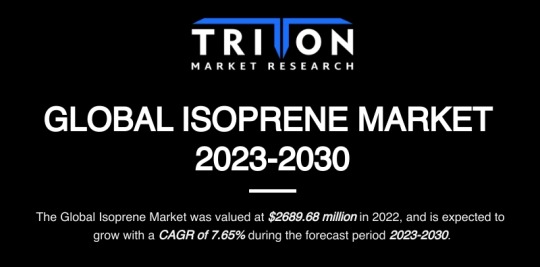
The demand for eco-friendly tires, synthetic rubber, and footwear has further elevated the deployment of polyisoprene, styrene-isoprene styrene, etc. These factors have also influenced several R&D for effective isoprene applications. For instance, in 2022, researchers at the Leibniz Institute of Plant Biochemistry and Martin Luther University Halle-Wittenberg developed the precise conditions for the enzymatic breakdown of synthetic polyisoprene rubber.
Tire, Adhesive, & Rubber: Expanding Scope of Isoprene Market
Fastest End-user: Tires expected to advance with 7.91% of CAGR during 2023-2030
Tires are essential for vehicles like trucks, tractors, buses, aircraft landing gear, forklifts, etc., as they offer traction and cushioning for wheels. In this regard, polyisoprene tires possess strength, wear resistance, and resilience. Estimates indicate polyisoprene to witness the fastest growth in terms of usability at a CAGR of 8.07% during 2023-2030. While polyisoprene is widely preferred, isobutylene-isoprene’s elastomeric properties are ideal for tire inner and high-pressure tubes. This has prompted various strategic initiatives, including halo butyl rubber manufacturing facilities by Sibur in India, with an annual production target of 60,000 metric tons.
Increased vehicle demand and auto sales benefits have soared the demand for isoprene for tire production globally, especially in the Asia-Pacific. As per estimates, China and Japan contribute around 70% of global tire manufacturing. Therefore, expanding automotive sector creates opportunities for the Asia-Pacific isoprene market.
Revenue Growth: Adhesives expected to register a CAGR of 7.30%
Isoprene adhesives, known for their flexibility, bridge gaps on surfaces in various industries, including aerospace, medical, and electrical. In the medical industry, adhesives find applications in catheters, tapes, etc. In this regard, polyisoprene finds application as a substitute for natural rubber. Isoprene demand in this sector is because it reduces Type I allergies while mitigating nitrosamine synthesis.
As a result, several players have made significant adhesive advancements, significantly boosting the studied market’s growth. For example, in 2020, Henkel inaugurated its largest adhesive production facility in India, supporting nearby regions like the Middle East. Similarly, Arkema established a sizable adhesive factory in Japan, catering to sectors such as hygiene, packaging, labeling, etc.
Due to its outstanding tack and high flexibility, styrene-isoprene styrene (SIS) is also employed to develop adhesives. Estimates suggest SIS is set to expand in volume as it is largely used as a hygiene adhesive in personal care items such as baby diapers, feminine hygiene products, etc. Due to the availability of thermoplastic elastomers in producing these products, the demand for styrene-isoprene styrene is anticipated to increase over the forecast years.
2023-2030: Industrial Rubber Witness Volume Growth at 4.62%
Industrial rubber finds application across diverse sectors such as construction, automotive, and manufacturing. Isoprene in industrial rubber has increased, particularly in construction. It is commonly employed in wall and floor coverings, mechanical rubber goods, geo-membranes, elevators, wiper blades, rubber hoses, etc. Isoprene rubber is well-suited for industrial purposes due to its suspension capacity, rubber reusability, and versatility. The category is projected to expand rapidly due to urbanization, increased disposable income, and population growth.
In addition to the volatile cost of natural rubber, technological advancements in isoprene rubber, including styrene isoprene styrene, polyisoprene, and butyl rubber, fuel the expansion of the isoprene market. For instance, Zeon Corp and Yokohama Rubber Co Ltd co-developed a new technology to produce isoprene from biomass for synthetic rubber production.
Bio-Based Isoprene: A Sustainable Opportunity
The surge in natural gas supply over recent years has shifted ethylene production away from naphtha to ethane cracking. This transition has significantly reduced isoprene production, leading to volatile polyisoprene market prices. Consequently, more sustainable routes for isoprene production involving bio-based products are being explored.
Biomass shows promise as a renewable feedstock for polyisoprene used in the rubber industry. Bio-based isoprene holds potential in various applications, including medical appliances, footwear, rubber tires, fragrances, and polymeric materials. For instance, in 2023, Ginkgo Bioworks collaborated with Visolis to decarbonize tire manufacturing while promoting bio-based isoprene use. Hence, the growing focus on eco-friendly approaches is expected to create affluent opportunities for the isoprene market.
FAQs:
Q1) What is the volume growth of the global isoprene market?
The global isoprene market is expected to witness volume growth at a CAGR of 5.15% during the forecast period 2023-2030.
Q2) Which grades of isoprene are employed across end-user industries?
Polymer and chemical are widely employed grades across end-user industries.
#isoprene market#isoprene#chemicals & materials#polymers & resins#triton market research#market research reports
0 notes
Text
NVIDIA’s GTC in Four Headlines
New Post has been published on https://thedigitalinsider.com/nvidias-gtc-in-four-headlines/
NVIDIA’s GTC in Four Headlines
Impressive AI hardware innovations and interesting software moves.
Created Using DALL-E
Next Week in The Sequence:
Edge 381: We start a new series about autonomous agents! We introdice the main concepts in agents and review the AGENTS framework from ETH Zurich. Additionally, we provide an overview of BabyAGI.
Edge 382: We review PromptBreeder, Google Deemind’s self-improving prompt technique.
You can subscribe below:
heSequence is a reader-supported publication. To receive new posts and support my work, consider becoming a free or paid subscriber.
📝 Editorial: NVIDIA’s GTC in Four Headlines
I tried to resist making this weekend’s editorial about NVIDIA because I think you might have been inundated with headlines from the GTC conference. Unable to resist, I instead decided to present the four most impactful announcements in terms of ambition and market impact. If I have to summarize two key takeaways from NVIDIA’s AI announcements this week, they would be these:
NVIDIA is not only outgrowing but also out-innovating everyone else in AI compute hardware by a large margin.
NVIDIA’s software ambitions should be taken seriously.
To put that in context, here are four key announcements from this week’s GTC:
Blackwell GPU Series: NVIDIA unveiled the Blackwell B200 GPU, optimized for trillion-parameter models. The chip can improve LLM inference by up to 30x, which is quite remarkable.
NIM Microservices: My favorite announcement of GTC was the NIM platform, which delivers models optimized for inference and packaged as containers. NIM speeds up inference by using the Triton Inference Server, TensorRT, and TensorRT-LLM.
Project GR00T: I think the coolest and most ambitious announcement was Project GR00T, which focuses on developing foundation models for humanoid robots. The stack is based on multimodal models for video, audio, and language.
Distribution: An overlooked announcement during GTC was the impressive list of strategic alliances with top software companies like Microsoft, Google, Amazon, Dell, Oracle, and many others. NVIDIA is simply everywhere.
There were many additional announcements at GTC, but the aforementioned four are incredibly impactful. NVIDIA’s AI hardware dominance is unquestionable, but it’s quickly making inroads in the software space.
🔎 ML Research
Chronos
Amazon Science published a paper introducing Chronos, a family of pretrained foundation models for time series forecasting. Chronos models time-series data using the same techniques used by LLMs —> Read more.
Moirai
Salesforce Research also got into time series forecasting with foundation models with the publication of a paper detailing Moirai. The new model follows the paradigm of a universal forecasting model that can issues predictions across many domains and time scales —> Read more.
TacticAI
Google DeepMind published a paper detailing TacticAI, a model that can provide technical insights in football( soccer) plays, particularly corner kicks. The model uses geometric deep learning by generating possible reflections of a game situation including the player’s relationships —> Read more.
RAFT
Researcers from UC Berkely published a paper introducing retrieval-augmented fine-tuning(RAFT), a training technique that improves the ability of models to answer questions based on external data. Given a question, RAFT ignores the documents that are not relevant to formulagte the answer leading to more accurate outputs —> Read more.
Evolutionary Optimization and FM Model Merging
Researchers from Sakana AI published a paper that uses evolutionary optimization to merge foundation models. The technique attempts to harness the collective intelligence of different models to create more powerful foundation models —> Read more.
SceneScript
Meta AI Research published a paper detailing SceneScript, a method for reconstructing layouts of physical spaces. The technique can have profound implications in augmented reality scenarios that merge physical and virtual spaces —> Read more.
🤖 Cool AI Tech Releases
NVIDIA NIM
NVIDIA announced NIM, its cloud microservices endpoints for pretrained foundation models —> Read more.
Grok
Elon Musk’s xAI open sourced a version of its marque model Grok —> Read more.
Stable Video 3D
Stability AI released Stable Video 3D, an improved model that can generate 3D objects from text descriptions —> Read more.
🛠 Real World ML
AI Training Logging at Meta
Meta discusses Logarithm, their solution for AI training logging —> Read more.
GNNs at Pinterest
Pinterest details their use of graph neural networks(GNNs) for content understanding —> Read more.
RL at Lyft
Lyft discusses the architecture powering their internal reinforcement learning workloads —> Read more.
Cloud Monitoring at Microsoft
Microsoft discusses the AI used to monitor its Azure cloud services —> Read more.
📡AI Radar
NVIDIA unveiled plenty of AI hardware and software innovations at its GTC conference.
Reddit had a strong IPO debut fueled by AI data demands.
Apple is reportedly in conversations with Google to power IPhone AI features using Gemini.
On a surprising move, Microsoft hired Inflection co-founder Mustafa Suleyman and part of his team to lead its Copilot efforts.
After loosing several key people, Inflection announced a pivot into AI for business.
NVIDIA announced a series of AI partnerships with the world’s largest tech companies.
Databricks announced the acquisition of Lilac to improves its unstructure data preparation and analysis capabilities.
Astera Labs shares popped 70% in its IPO pushed by the demand of its AI data transfer features.
Roblox introduced new AI features for Avatar creation and texturing.
Anthropic, AWS and Accenture announced a strategic alliance to bring generative AI to enterprises.
ServiceNow released a new version of its Now platform for AI workflow automation.
Amazon and Snowflake announced a partnership to modernize data streaming pipelines.
TheSequence is a reader-supported publication. To receive new posts and support my work, consider becoming a free or paid subscriber.
#3d#3d objects#accenture#ai#ai training#Amazon#Analysis#Announcements#anthropic#apple#architecture#audio#augmented reality#automation#avatar#AWS#azure#azure cloud#blackwell#Business#Cloud#cloud services#Collective#Companies#conference#Containers#content#data#data preparation#data streaming
0 notes
Text
Vetronics Market | Global Trends & Military Opportunities
Technology has significantly advanced, playing a crucial role in several industries. The paradigm for R&D in the defense sector has evolved investments in vetronics. This is a result of the growing trend across different defense forces to equip military vehicles with technologically sophisticated electronic systems.
According to our experts, the global vetronics market was valued at $3668.33 million in 2021 and is expected to reach $5372.01 million by 2028, with a CAGR of 5.62% during the forecast period 2022-2028.
Vetronics, also known as vehicle electronics, enables military units to implement and integrate systems such as communication, command and control, vehicle warfare, navigation, vehicle protection, and surveillance. Over the years, its relevance has increased as defense departments seek to make their armed forces lighter, faster, and more deployable.

Integration of Digitalization in Battlefield Operations
The digitization of domains such as communication and surveillance is critical in the integrated operations of the modern battlefield. Electronic warfare has already been adopted as a sub-domain by the majority of advanced nations. They actively engage in advanced capability research to equip their forces and gain a tactical advantage over their competitors.
For example, the US Army is testing the Electronic Warfare Tactical Vehicle (EWTV), containing an unspecified specification of radio jamming equipment. It can detect and disrupt a wide range of signals, from cellphones to enemy UAV control links.
Factors such as ease of deployment and a broad range of sensing and disruption are key features incorporated in modern armored vehicle-mounted jamming systems that increase their utility. The rapid adoption of such technology is expected to drive the studied market during the forecast period.
Additionally, the ongoing military modernization programs in respective armies worldwide have increased the number of land-based vehicles. Our study suggests tanks are the fastest growing land-based fleet type segment, with a CAGR of 5.82% during the forecast period. The development is due to the interconnection systems of the new tanks. The technological update enables tanks to integrate with wheeled armored vehicles outfitted with standard vetronics to collect and transform battlefield sensor data into high-value security and combat services.
Impact of Competitors’ Strategic Initiatives
The global vetronics market is highly fragmented, with key players controlling significant market shares. Major companies like Thales Group, Lockheed Martin Corporation, and L3Harris Technologies continue to invest in the R&D of military robotics and related subsystems. Such measures have enabled them to expand the spectrum of applications for their distinctive and exclusive product line of vetronics.
The market participants’ operations focus on designing, engineering, and manufacturing high-performance vetronics for the world’s armed forces’ terrestrial assets. Furthermore, because a contract for armored vehicles necessitates high technological expertise, the companies are merging to enhance their current portfolio. Some of the examples are listed below-
Collins Aerospace Military Global Positioning System (GPS) division was successfully acquired by BAE Systems, bringing decades of experience, cutting-edge technology, and a sizable installed base of products.
With the purchase of Gemalto by Thales for €4.8 billion, the acquisition will cover every step of the important decision-making process in the digital age, from sensor-generated data to real-time decision support.
Curtiss-Wright Corporation announced on July 5, 2022, that it had successfully acquired the Safran Aerosystems Arresting Company (SAA) for $240 million in cash. The acquisition of Safran’s arresting systems division solidifies Curtiss-position Wright as the world’s leading recovery and arresting systems provider for fixed-wing aircraft. Curtiss-Naval Wright’s & Power division will include the company.
Key Challenges & Regional Opportunities
Although cuts in the defense budget and the rising cost of raw materials can challenge the vetronics market, it is continuously expanding due to breakthrough technology in military vehicles.
The current fiscal condition worldwide is the key barrier to the market’s expansion. Many emergent breakthroughs offer considerable long-term benefits but need significant investments in deploying new technologies and platforms.
Based on the global scenario, the North America vetronics market held the largest share in 2021 and is expected to maintain its stronghold throughout the forecasting period. The region is witnessing considerable growth, owing to its military and government efforts to modernize its army and fleet.
Additionally, the United States is the key contributor to the regional market, accounting for 96.93% of the share in 2021. The country’s large market share is due to the rapid development of venture capital markets. For instance, American Rheinmetall Systems has received a multi-million-dollar investment to offer cutting-edge combat vehicle mission systems technologies to support the modernization of US Army combat vehicles.
0 notes